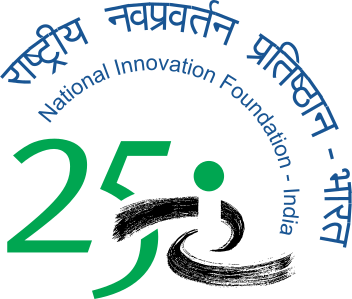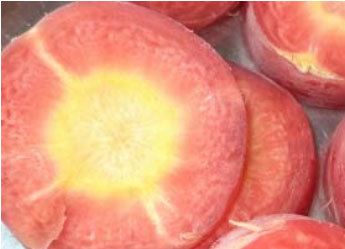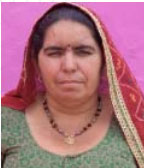Improved variety of carrot (Laxmangarh Selection)
Genesis
Sixteen years back, Santosh Pachar had collected some carrots for consumption from a farmer, Mahaveer, belonging to the Akwa village in the Laxmangadh tehsil. The carrot was very good in appearance and there were very less number of forked root. She adopted the root-to-seed method of planting at her farm to produce seeds of the above carrot. The criteria of selection of carrot for seed production were long root-length, sweetness, “Sinduri”/vermilion color and softness. She collected the seeds from the first year plants and sowed it again in small field and adapted same selection method continuously for 4 to 5 years, which stabilized the desirable characters. She also used neem oil for controlling insect-pest and disease.
The improved carrot variety
The carrot variety has been developed by Smt Pachar adopting the root-to-seed method of planting. The criteria of selection of carrots for seed production were long root-length, sweetness, vermilion color and softness. The variety is well adapted to high temperature. The length of carrot is up to 1.5 ft with the percentage of forked roots being quite low. This variety is resistant to disease and insect pest attack and takes about 2.5-3 months to be ready. It is less hairy and yields almost 630qt/ha. It is sweet in taste and fetches high market price due to its quality.
Santosh has also experimented with the seed sowing method. The seeds are stored in cotton bag. Two kg/bigha seeds are taken for sowing. Prior to sowing the seeds are scarified by rubbing them with palm. After scarification, seeds are treated with sesame oil and then sown in pre-prepared plots (size 15 x 20 ft) on rows. After sowing the fields are irrigated heavily with sprinkler to maintain the high soil moisture. Light irrigation should be given upto one month using sprinklers. After one month normal irrigation process is followed. Weeding is carried out at an interval of 15-20 days after sowing and thinning practice is adopted for maintaining spacing.
After three months, the colour of the carrot leaves changes to light yellowish, which is an indication of crop maturity. This implies that carrots are ready for uprooting, after which they are cleaned, washed, packaged and marketed.
The enterprising lady
Santosh has an innate learning capability and consciously makes an attempt to learn from others’ experiences and share her own. Having distributed seeds of her variety, she has also taught farmers the practices she followed. She has attended several meetings at KVKs, gram panchayat and regional farmers’ meet where among other things, her innovation has also been discussed. She even invites farmers to her field to see her work. She has been acknowledged for her efforts and has received some recognition. She is grateful to her family and others for all the support they have provided to her. While the urge to do something new was the main cause for her innovation, demand from the market was the driver for continuous improvement.
Santosh wishes to experiment further to improve the variety and also come up with certain other innovations. She is also on the lookout for some financial support to help her scale up her experimentation efforts. Exhorting fellow farmers to undertake field experiments themselves, she exclaims, “tum sab aage bado, hum tumhare sath hain” (all of you move ahead in your work, we are there to support you).
- Length of carrot is up to 1.5 feet
- Forked roots are very less
- Ready for harvesting in 80 to 90 days
- The variety is adapted to high temperature
- Sweet in taste and better quality
- Less pith diameter








